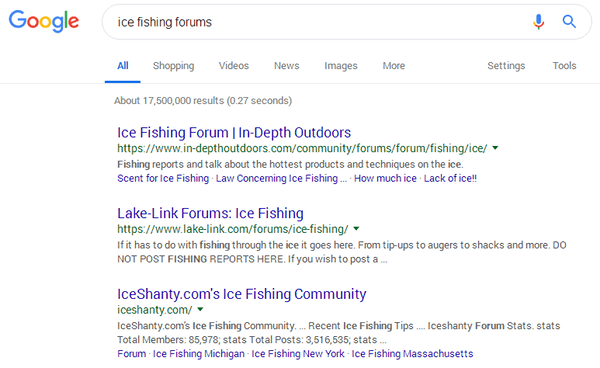How To Find Your Audience’s Biggest Pain Points

Consumers don’t care how great your content and your products are. What they’re looking for are solutions to their problems.
As a blogger (and business owner), you’ll see the most growth when you provide solutions to those problems.
But what types of pain points does your audience have? And how exactly do you go about discovering what those pain points are?
Why you need to pay attention to your audience’s problems
The best products solve problems, either by offering a solution to a problem that’s never been solved before or by offering an entirely new way of doing things.
That’s why you need to pay attention your audience’s problems. They’re your best bet when it comes to driving more traffic to your blog and generating more revenue for your business.
Think about the products and services you’ve used recently. They likely weren’t world famous or spectacular in any way. Even so, they served an important purpose by solving a problem you were having.
Your content and products can do the same.
You don’t need to fall into the same trap so many entrepreneurs find themselves in. It’s the one where they try to outdo everything that’s been done before and fail miserably while doing so.
All you need to do is find the challenges your audience is facing. They’ll give you a guideline to follow as you search for topic and product ideas that will help you achieve your goals.
With this information you’ll be able to create what’s known as an audience persona.
What types of pain points do audiences have?
Your audience is going to have a variety of different pain points that can be broken down into the following categories:
- Monetary – They aren’t able to succeed in your niche due to financial constraints. There could be several reasons for this, such as current solutions not being cost effective for average consumers. They may also not be experienced enough in your niche to know how to save, which leads me to my next point.
- Learning – A major reason why members of your niche may not succeed is they’re having trouble learning all of the new skills that coincide with it. Again, there could be several reasons for this, ranging from their own inexperience to a lack of reliable information and tutorials on topics related to your niche.
- Productivity – This one piggybacks off of the previously mentioned pain points. No matter what they do, members of your target audience may fail in making progress when it comes to learning about or succeeding in your niche. This could boil down to monetary issues or a lack of knowledge, or it could be something else entirely.
- Support – Something you may come across while you go through each method listed below is several members of your target audience lamenting about the lack of support in your niche.
Your audience’s problems are obviously going to be a lot more specific than these. If you run a gardening blog, for instance, instead of “productivity issues,” they’ll say they aren’t able to keep plants alive or their plants aren’t growing as quickly as they hoped.
Let’s get into the main focus of this post.
How to find your audience’s biggest pain points
A lot of marketing articles encourage the use of cold data to determine the problems people are having within your niche.
In reality, you aren’t a big name brand that can survive as a faceless corporation in this way. As a small-time entrepreneur looking to make money blogging, your audience’s trust is your most valuable asset.
No matter how much data you have access to, nothing beats getting this information directly from the horse’s mouth.
That’s why many of the methods we’re going to cover focus on talking directly to your target audience. Here’s a round-up of the methods we’ll be going over:
- Method #1: Ask Them
- Method #2: Listen to Them
- Method #3: Forums
- Method #4: Reviews
- Method #5: Comment Sections
- Method #6: Keyword Research
Let’s start at the top.
Method #1: Ask them
The most effective way to learn about the biggest problems your audience is facing right now is to ask them directly. There’s no guesswork involved.
You won’t be creating content and products in hopes of hitting a moving target. You’ll be hitting bullseyes everytime by creating solutions for problems they’ve told you they’re having.
There are a number of different ways you can ask your audience what their biggest pain points are. The most effective approach is one-on-one conversations.
See if some of your most engaged blog readers or email subscribers would be up to chatting with you through voice chat, email, DM or the phone. You can also hit people up on forums related to your niche or even in your personal life. Just make sure they’re part of your target audience.
You can also add an email to your welcome email series that asks new subscribers what their biggest problem is at the moment. Start the email with a very short, one to two-paragraph story about one of the largest obstacles you’ve overcome in your niche. Conclude with a simple question – ”What’s the biggest problem you’re facing right now?”
You can even create a short survey and promote it through your site, email list and social media. A free tool like Typeform.com will help.
Method #2: Listen to them
The second most effective way to find out what your audience’s biggest pain points are is to simply listen to them. They likely already ask you questions all of the time.
They can alert you to anything your target audience is struggling with. Again, these answers will guide you toward topics you should be focusing on.
Pay special attention to your comment section, email list and social media mentions. Start jotting down all of the questions your audience asks you, and see if you can spot any consistencies.
You can even set up an “Ask” contact form your audience can use to ask you questions directly. Give this contact form its own page and place it on specific blog posts, such as your most popular posts to ensure it’s seen by as many people as possible.
Method #3: Forums

Now, we’re going to move away from your own audience and focus on your target audience, which can exist virtually anywhere. We’ll start with online forums.
Similar to your own audience, what you’re looking for is patterns in the questions members of your target audience ask. Begin with dedicated forums in your niche. Do a simple Google search, such as “ice fishing forums.”
You can also look through topics related to your niche on Quora and browse through subreddits on Reddit. If you’re having trouble finding questions on forums, start a new thread called “What’s the biggest problem you’re facing right now in [niche]?”
Facebook Groups are a great place to look as well.
Method #4: Reviews

A great place to find your audience’s biggest pain points are reviews for products related to your niche. This mainly involves looking at books and courses, but you can also look at applications and physical products if you’re interested in creating them.
Look for any negative comments customers have made, especially in one and two-star reviews. Jot down the negative points they make and what they claim the creator didn’t cover or explain well enough.
Reviews on books and courses related to your niche on Amazon and Udemy are fantastic places to look.
Method #5: Comment sections
This one relates to the previous method. Instead of looking for negative comments in reviews, you’ll look for them in comment sections outside of your blog.
Start with the top dogs in your niche since they’re most likely to have active comment sections. You can also look up YouTube videos related to your niche. Lastly, look through the comment sections of articles related to your niche published by high-profile sites.
Again, what you’re looking for are problems commenters mention. Look for comments that criticize articles or videos specifically. Just like reviews, they’ll let you know where your competitors fall short, which will give you opportunities to fill any gaps they’re leaving behind.
Method #6: Keyword research
This should be your last resort since it forces you to rely on data rather than real answers from your target audience. You’re going to use search volume to determine which topics your audience cares about most.
The easiest (and cheapest) way of doing this is to use KWFinder by Mangools. To start, input a broad search term that represents your niche, such as “succulent garden,” “fly fishing” or “vegan cooking.” Use the Keyword Ideas tool to find related terms users search for. The higher the search volume, the more they care about that topic.
You can even use these related ideas as keywords for Methods 3, 4 and 5. This gives you an opportunity to solidify keyword data with actual answers from your target audience.
You’ll find more options in our post on keyword research tools.
How to use your audience’s biggest pain points to grow your blog
Using your audience’s biggest pain points to grow your blog is simple. All you need to do is come up with solutions for their problems and apply them. However, we can get a little more specific than that.
By the time you’re done with Method 6, you should have a decent sized list filled with the biggest pain points your audience is having right now. Start by rearranging this list based on the number of times a problem was mentioned, placing the most frequently mentioned problems at the top.
Instead of trying to solve all of these problems at once, tackle them one at a time, starting with the most frequently mentioned pain point on your list. Brainstorm several solutions to this problem with the following types of content and products:
- Blog posts
- Lead magnets
- Courses
- Books
- Software when applicable
- Physical products when applicable
If you’re going to create products, such as courses, consider starting with beta courses that are only 10-25% finished. Use blog posts that relate to these courses as a way to capture and segment email subscribers as being interested in the topics they represent.
Use these segments to presell beta courses at discounted rates that are much lower than what you’d charge for their full versions. If your conversion rates are high, you’ll know you’ve got a profitable idea on your hands. Refund the money and move on to the next idea if it doesn’t sell well.
If you speak with members of your audience and/or target audience one-on-one, be sure to consult with them as you create your solutions, whether it’s a blog post or a physical product.
They’re the ones that informed you of the problems they were having in the first place, which makes them the best judge on whether or not you’ve come up with viable solutions.
Final thoughts
Finding your audience’s biggest pain points is one of the most important steps you can take as a blogger and solopreneur. It’s all about discovering what problems they’re having in your niche so you can provide solutions to them with content and products.
It’s a much more effective way to go about planning your business in the long run. While you can’t guarantee you’ll earn more revenue this way, you’ll at least know you’re creating solutions for topics you know your audience cares about.
If you need help monetizing these solutions, be sure to read our guide on blog monetization.

